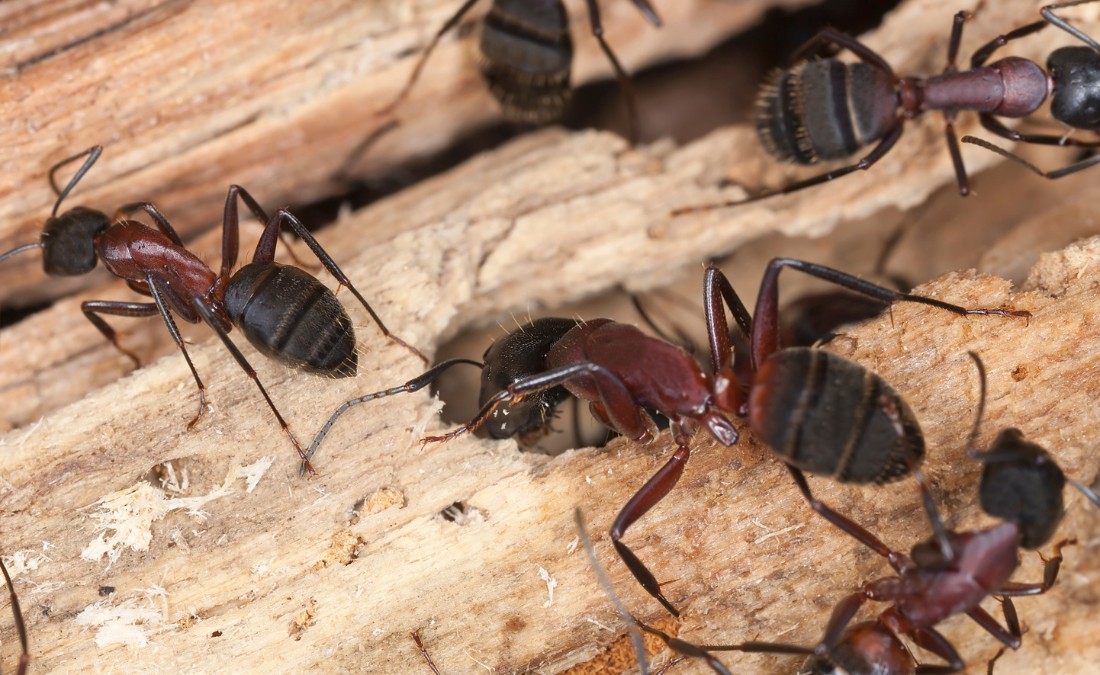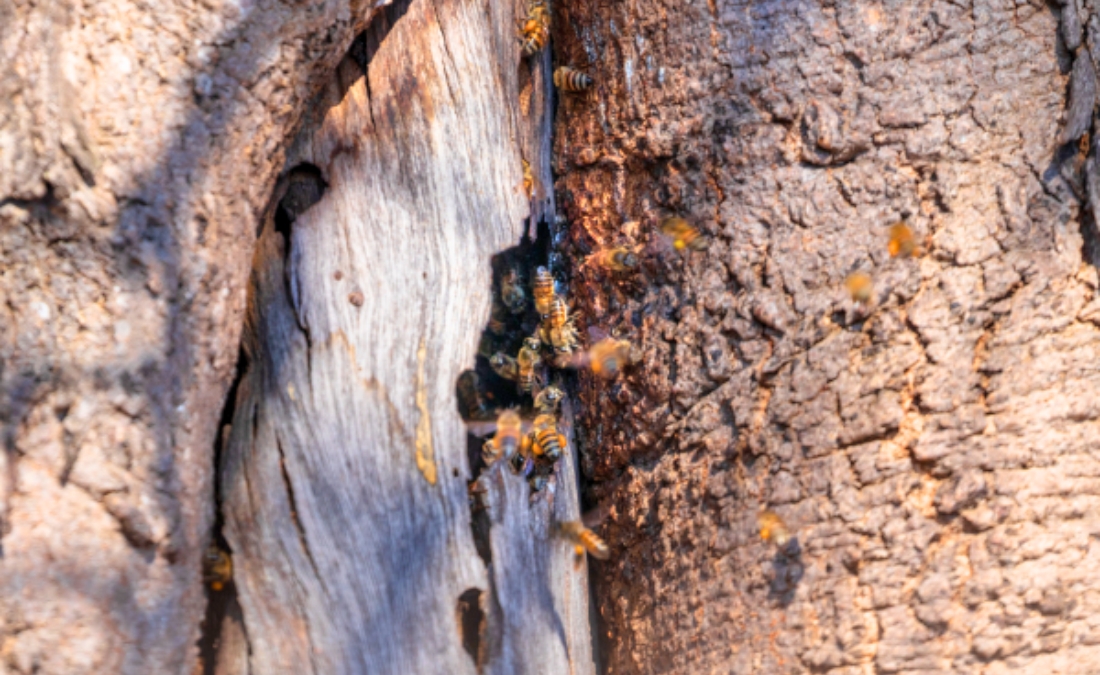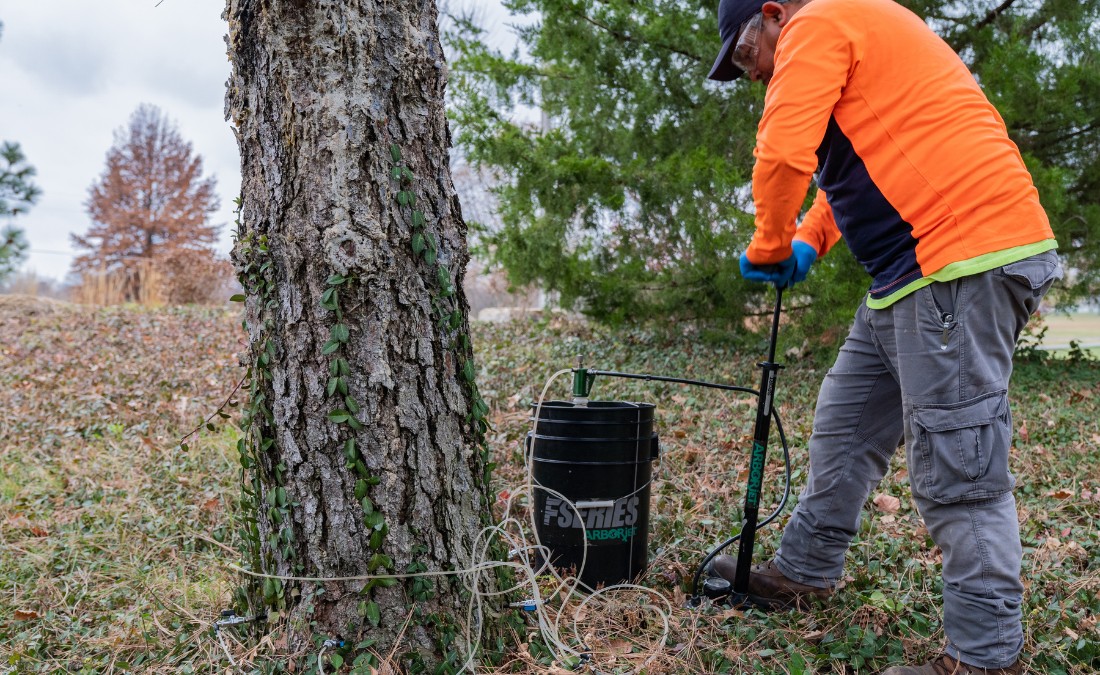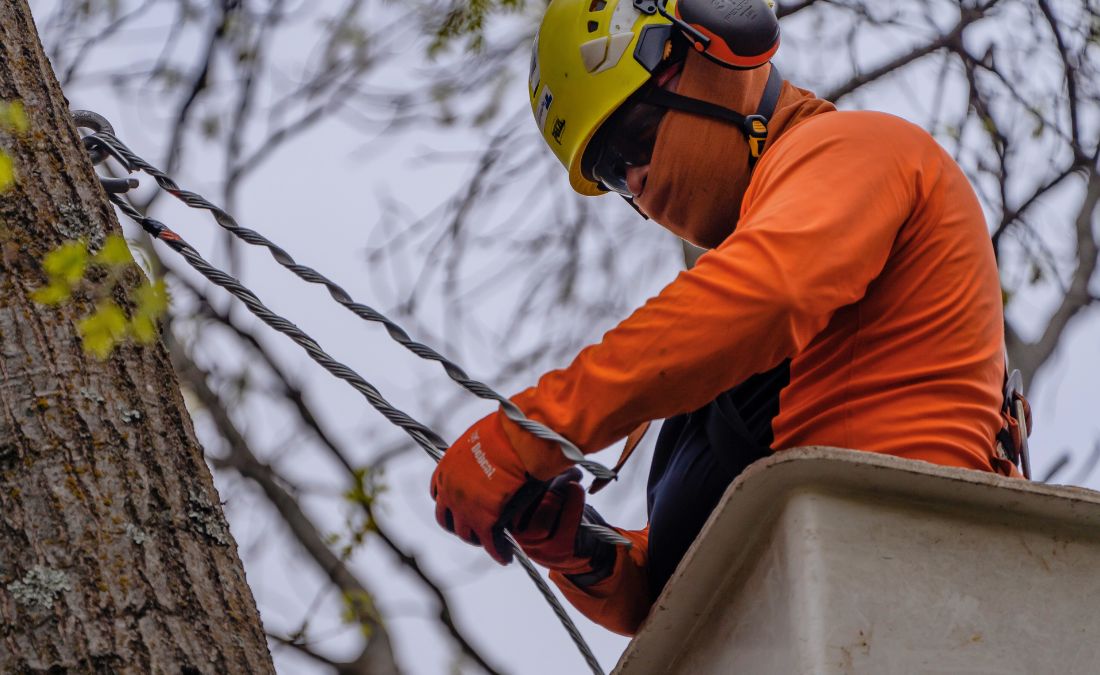5 Common Mistakes Kansas City Homeowners Make When Caring for Their Newly Planted Trees
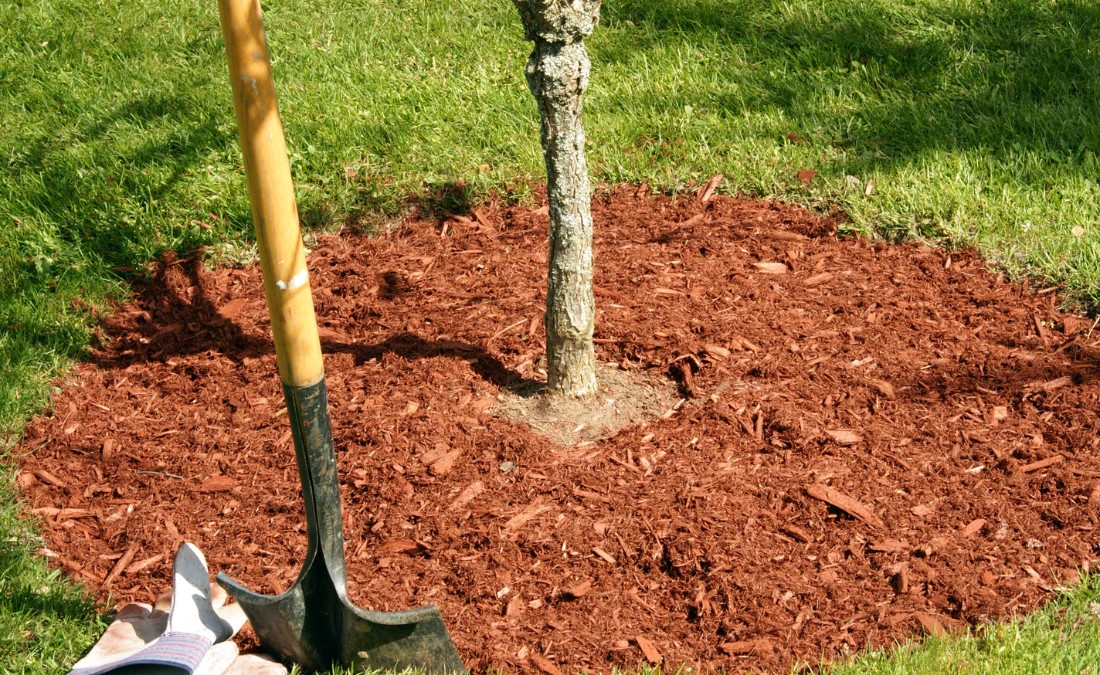
Planting a tree is just the beginning. Learn how to care for newly planted trees in Kansas City with tips from the certified experts at Arbor Masters.
If you’ve ever planted a new tree and noticed it wasn’t growing like you’d hoped, you’re not alone. Caring for your young saplings can take a lot of work, but it is worth it. Learn more about how to care for your newly planted trees in Kansas City while dealing with our unique conditions.
Key Takeaways:
- While young trees need regular watering, especially during droughts, overwatering can be harmful in Kansas City’s clay soil, so it’s crucial to check soil moisture before adding water.
- Proper mulching involves applying 2-4 inches of organic material extending to the drip line while keeping the root flare exposed to prevent disease and decay.
- Newly planted trees should not be heavily fertilized – the focus should be on root development, not top growth, to avoid stressing young root systems.
- Do not prune in the first year except to remove damaged branches, as early pruning can limit photosynthesis and proper establishment.
- Remove stakes as soon as the tree can stand on its own, as leaving them longer can damage the trunk and prevent it from developing proper strength to withstand Kansas City’s strong winds.
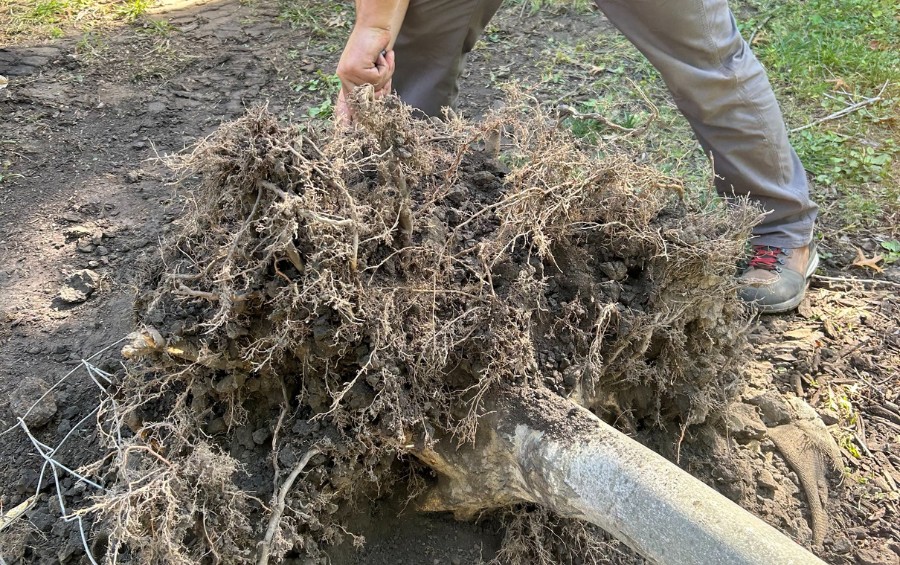
5 Common Mistakes When Caring for Newly Planted Trees
Tree planting requires ongoing care and attention. Here are five common mistakes that can harm or kill your new tree.
PRO TIP: There’s never been a better time to plant trees in Kansas City, as Canopy Cover KC has been supplying free trees to help increase our urban canopy. You can do your part to support this initiative by planting trees if you have enough space.
1. Overwatering the Newly Planted Tree
Trees need water when young, especially during Kansas City’s droughts. However, overwatering can be just as devastating as not giving them any water.
Overwatering is even more of a problem in Kansas City because of our clay soil. The heavy clay content retains moisture much more than sandy soils. Overwatering can make the soil swampy and stress a tree, as most do not like to have “wet feet.”
Some general tips to avoid overwatering include:
- Always check if the ground is dry by digging a two-inch hole and feeling the soil to see if it is dry or moist.
- Use a soaker hose to water under the tree’s canopy and get the water to the deeper roots.
- Check the weather for any upcoming precipitation to avoid providing water right before a rain storm.
“People tend to panic during a drought and think, ‘More water has to be better,’ but that’s not always true – especially with our heavy clay soil here in Kansas City. That stuff holds onto water like a sponge, and too much can drown the roots. I always tell homeowners: check the soil first. If it still feels damp a couple inches down, skip the watering and let the roots breathe.” – Alex Lathrop, Arbor Masters Arbor Advisor
2. Using Too Much Mulch Around the Tree
Organic mulch has several benefits for trees, but only if you do it right. Your mulching should be more deliberate than dumping the bag’s contents on the ground and calling it a day.
Over-mulching has several negative repercussions, including:
- Smothering the Roots: Too much mulch can lead to roots not getting adequate oxygen and water. It can also retain too much moisture, leading to waterlogged clay soil and the potential for root rot.
- Buried Root Flare: The root flare (the part of the tree where the trunk meets the roots) shouldn’t have mulch or anything else on it. When you pile mulch on the root flare, it won’t be able to dry out and can end up decaying.
- Increased Risk of Diseases: Many common fungal and bacterial tree diseases thrive in moist conditions. Excessive mulch traps moisture and creates breeding grounds for diseases.
As soon as you plant a tree, we recommend applying wood chips. The mulch should be two to four inches thick and extend to the edge of the drip line (the area under the canopy). This will not be very far with a newly planted tree, so feel free to expand it further. Do not pile the mulch around the trunk. Instead, leave a space of about half a foot to avoid smothering the root flare.
3. Overapplying Fertilizer
You’ve likely heard of the benefits of fertilizing your trees, especially in the fall. Or you may have heard that nitrogen should be applied every spring to plants to encourage green growth. When it comes to new trees, it’s best to focus on root development. Our fertilization program for new trees has a minimal amount of slow-release nitrogen, and we focus on root growth and moisture retention. Don’t necessarily expect a newly planted tree to produce new crown growth right away. Root development requires a lot of the tree’s energy in the first few years of establishment.

4. Over-Pruning a Young Tree
Pruning is a vital service for a young tree, but one to do sparingly. We typically recommend waiting a year before you do any corrective tree pruning.
Removing branches and their leaves from the tree too early will limit its ability to perform photosynthesis and establish itself. The only early pruning we recommend is removing any branches damaged during the transplant process.
Once the tree is ready for a trim, keep any corrective pruning light to avoid stressing your tree or killing it. Selectively remove branches to encourage one central trunk that goes straight up from the ground. If you aren’t sure what to cut, have an arborist perform the service to ensure your tree remains healthy.
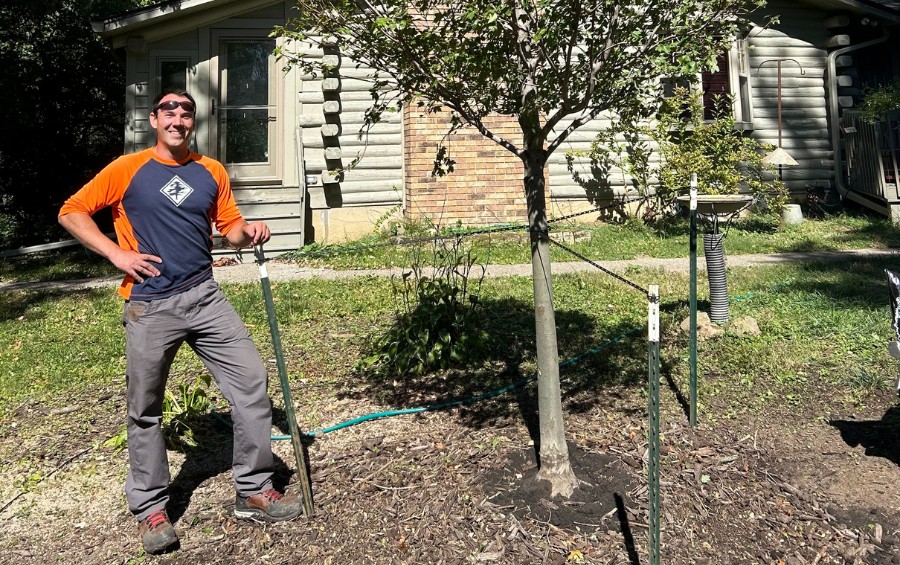
5. Keeping Stakes on Too Long
Kansas City is one of the windiest cities in America, and tornadoes are often a concern for residents. To counteract this, many homeowners stake their tree to help balance it when the wind picks up.
While there’s nothing wrong with staking a sapling, they can run into trouble when a homeowner leaves them staked too long. Stakes can damage the tree if you leave them on for too long, and they can prevent a trunk from developing its natural girth.
In general, stakes are only necessary for six months to two years after planting, depending on the species and conditions. If you aren’t sure if a sapling needs stakes, have an arborist inspect them to see if they are still necessary.
Frequently Asked Questions About Caring for Newly Planted Trees
There’s no shortage of concerns for newly planted trees in the Kansas City metropolitan area. We’ve compiled some common questions to help Raytown homeowners understand how to care for their new trees.
What should I do if my newly planted tree’s leaves turn brown?
Discolored leaves could indicate your tree is dealing with transplant shock. One common cause of transplant shock is a lack of water. Check the water content of the soil and provide deep watering if it feels dry. If the discoloration continues, speak with an arborist to determine the problem.
Should I wrap my trees in the winter?
Wrapping newly planted trees in the winter can help protect them from damage, such as sunscald or frost cracks. Wraps help prevent the outside of the tree from heating up too much during a sunny winter day, which leads to frost cracks. Remember to remove the wrapping when the weather begins to warm up to avoid overheating in the summer.
How do I know if my soil is good enough to grow a tree?
Before planting, a professional should conduct a soil test to determine the available nutrients and pH level. You can also test your soil’s drainage by following this guide. Our clay soils can make it difficult for new saplings to thrive, so prepare before planting.
What species should I plant in my Kansas City yard?
Because of our unique climate and soil conditions, Kansas State put together a list of recommended species that thrive in the Kansas City metropolitan area. Some recommended trees include:
- Redbud
- Japanese maple
- Flowering dogwood
- Weeping cherry
- Hackberry
- River birch
- American elm
- Red oak
How do I properly plant a tree?
Some common tree planting mistakes include:
- Planting with an improperly sized hole. The hole should be as deep as the root ball and two to three times as wide.
- Planting in the wrong location. You’ll want it to have space to grow and to get plenty of sunlight.
- Letting the tree lean. Check the tree from multiple angles to ensure it is straight-up when planting.
For help with tree planting, consult an arborist or follow the guide from the International Society of Arboriculture.
Give Your Newly Planted Trees the Best Start with Arbor Masters
Planting a tree is just the beginning – how you care for it in the first few years will determine how strong, healthy, and problem-free it will be down the road. In Raytown and the greater Kansas City area, tricky soil and unpredictable weather can make tree care a real challenge.
The Arbor Masters team in Raytown has the skills and techniques to provide the best care to your saplings and give them the best chance to thrive. We’ll help you every step of the way, so call us today at 816-524-3131 or request a quote online.

Want More Like This?
Get the latest local news, tree care tips, special offers, and company updates directly to your inbox! It's easy to subscribe and there's no spam - we promise.
"*" indicates required fields

